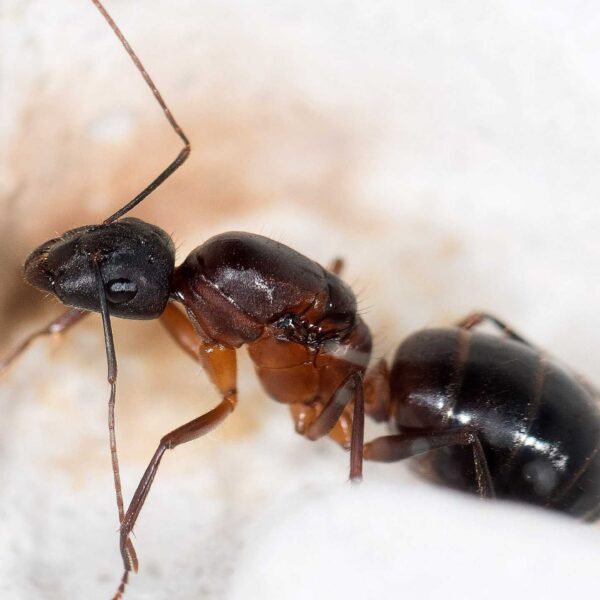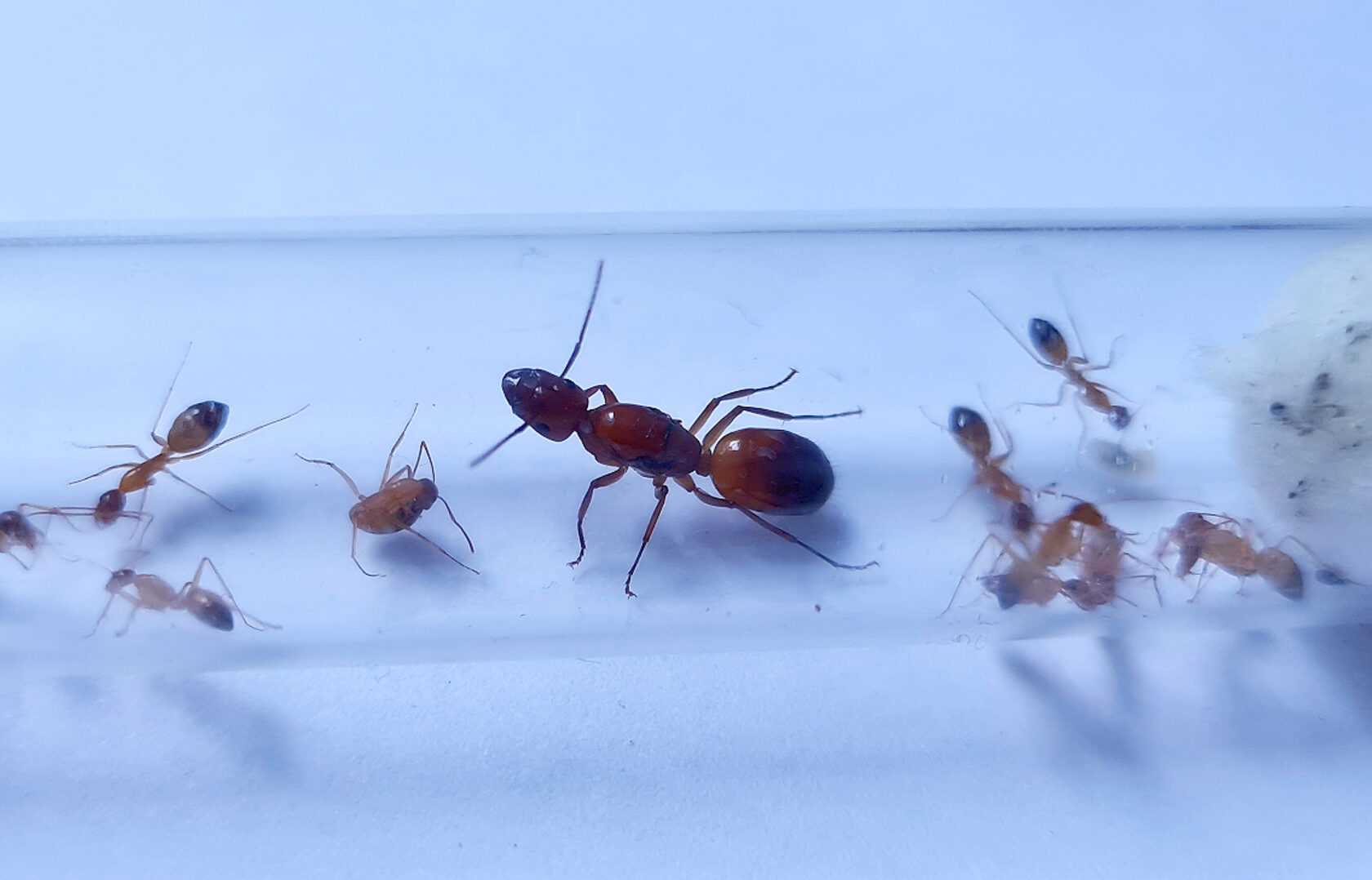Camponotus baldaccii
Camponotus baldaccii, also known as the brown-orange ant, is native to Europe. As one of the largest ant species on the continent, they are known for their frugality, aggression, and defensive nature, making them an interesting species to keep as pets. In this article, we will discuss the key characteristics of Camponotus baldaccii and provide recommendations for their proper care and breeding.
Colony Type and Size
Camponotus baldaccii colonies are monogynous, meaning there is only one queen in each colony. The colony size can reach up to 5,000 workers, making them a relatively large ant species.
Development Rate and Size
The development rate of Camponotus baldaccii is considered medium. The queen of this species can grow to a size of 14-17mm, while the workers are typically 6-11mm in size. There are also major workers, which are larger and measure around 11-13mm.
Coloration
Camponotus baldaccii ants have a distinct brown-orange coloration, which makes them easily recognizable and appealing as pets.
Nutrition
When it comes to nutrition, Camponotus baldaccii ants have a varied diet. They primarily feed on food insects like cockroaches and crickets. Additionally, they can be fed syrup made from a mixture of water and honey (in a ratio of 4:1 or 3:1), as well as fruit, vegetables, jelly, and cooked chicken without salt. Providing a diverse diet is key to ensuring the health and well-being of the colony.
Humidity and Temperature Requirements
Camponotus baldaccii ants require specific humidity and temperature levels for their optimal growth and development.
- The humidity in the arena, where the ants spend most of their time, should be maintained at a range of 30-50%.
- In the nest area, the humidity should be slightly higher, ideally between 40-60%.
As for the temperature, the arena should have a range of 24-28 °C, while the nest area should be slightly cooler, with a range of 22-26 °C. Maintaining the appropriate temperature and humidity levels is crucial to ensure the health and well-being of the colony.
Recommended Nests for Breeding
There are various types of nests suitable for breeding Camponotus baldaccii ants. Some recommended options include:
- Acrylic nests: These nests are transparent and provide a clear view of the ants’ activities. They are easy to clean and maintain, making them a popular choice among ant enthusiasts.
- Cork nests: Made from natural cork, these nests offer a more naturalistic environment for the ants. They provide good insulation and humidity retention.
- Plaster nests: Durable and with excellent humidity retention properties, plaster nests can be customized and decorated to mimic the natural habitat of Camponotus baldaccii ants.
- Aerated concrete nests: Made from light, porous materials, these nests provide good insulation and humidity control. They are often preferred for their durability and ease of maintenance.
When choosing a nest for breeding Camponotus baldaccii, it is essential to consider the specific needs of the species and provide them with a suitable and comfortable living environment.
In Conclusion
Camponotus baldaccii ants are fascinating creatures to observe and care for. With their large size, vibrant coloration, and intriguing behaviors, they make an excellent addition to any ant enthusiast’s collection. By understanding their colony type, size, development rate, nutrition requirements, humidity and temperature preferences, and the ideal nests for breeding, you can create the optimal conditions for the growth and well-being of your Camponotus baldaccii colony.















Reviews
There are no reviews yet.